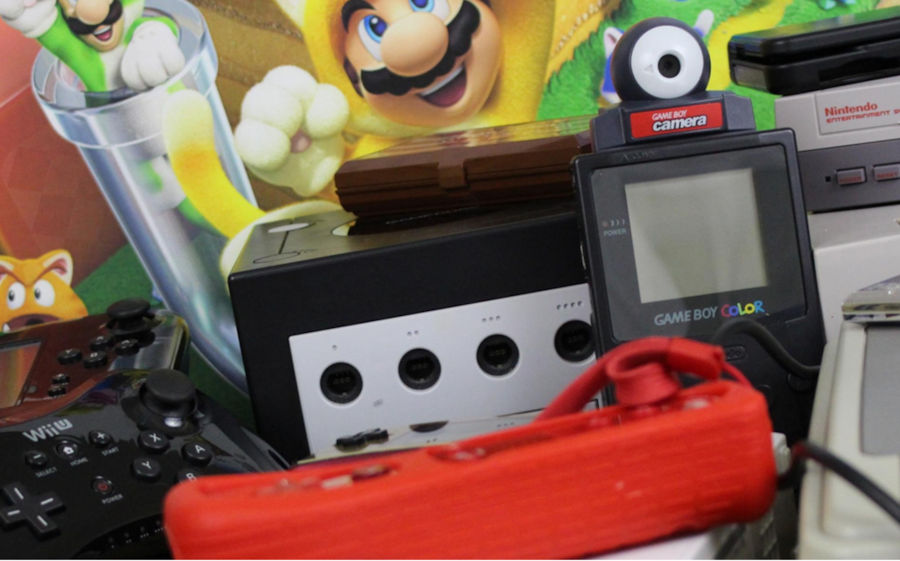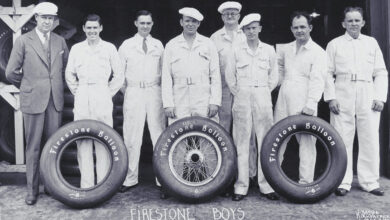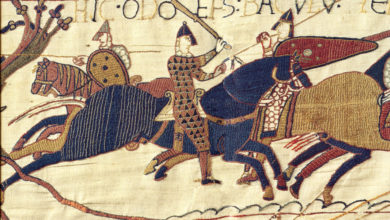
Podcast: Play in new window | Download
Today, when people think of Nintendo the first things that come to mind are consoles such as the Wii and the Switch. Maybe popular video games come to mind also such as Super Mario, The Legend of Zelda and of course Pokemon. However, the Nintendo company came into being way before the electronic age that spawned such pleasurable pastimes.
In fact, it began life in 1889 as a playing card company founded by Fusajiro Yamauchi. Based in Kyoto, the small company made Hanafuda cards, playing cards that were used for a variety of different games. Each set of cards was carefully handcrafted and they became immensely popular.
During the early 20th century it was custom for the father to pass down responsibility for the running of a business to his son. However, Yamauchi had only daughters, and so lacked a son to inherit the business. He overcame this problem by adopting one of his sons-in-law, Sekiryo Yamauchi, who took over the business after Yamauchi senior’s retirement.
Sekiryo Yamauchi agreed to a merger with another company in 1933 and the resulting company was renamed Yamauchi Nintendo and Company. To distribute the Hanafuda cards along with the other cards the company produced, he established a separate company in 1947 called the Marufuku Company. He, too, only had daughters, so his grandson, Hiroshi Yamauchi, inherited the leadership of the company in 1949.
This fourth-generation Yamauchi had a new vision for the company, and by 1953, he had changed the names of the companies to Nintendo Playing Card Company and Nintendo Karuta Company. That same year he introduced plastic playing cards which were a runaway hit.
Not content to rest on his laurels, he travelled to the United States in 1956 where he met with the United States Playing Card Company, the top card manufacturer in not just the US, but in the world. He realized that just because a company was physically quite small did not mean that it had to be content being a small player in the market.
In 1959 he decided to form a partnership with the Disney Company to market playing cards with Disney characters on them, opening up an entirely new market – children. This partnership was a great success, and the company sold 600,000 packs of cards in its first year. Nintendo also published books that taught children different card games that they could play with their new cards.
In 1962, Yamauchi took his company public and listed Nintendo on the Osaka Stock Exchange Second Division. The resulting infusion of capital allowed investment in a variety of diverse companies including a hotel chain, an instant rice company, a vacuum cleaner business and a taxi business. However, most of these turned out to be not very successful.
As the 1950s gave way to the 1960s, the markets began to change as playing cards gave way to other pursuits, and the company’s revenue started to fall. Its stock price, as a result, plummeted from ¥900 to ¥60 per share. This downward trend was about to change for Nintendo, though. In 1965, the company had hired a maintenance engineer called Gunpei Yokoi.
He created a toy called the Ultra Hand, which essentially used a lattice-like design to make an extendable hand that was used to grip, well anything really, including the three 1960s balls that came supplied with it. Yamauchi took notice of this new toy and got it ready to be sold in time for Christmas 1970. It was a smash hit and sold over one million units. Yokoi was moved into product development and he immediately came up with an idea to start looking at producing electronic toys, something that few other companies were doing.
Nintendo’s first venture into electronic games introduced the Odyssey games console which was produced and marketed in Japan through a partnership between Nintendo and an American company called Magnavox. The Odyssey was the very first games console to be produced and its success inspired Nintendo to create its own games and a games system to play them on.
So, in 1975 Nintendo developed the EVR Race game which was a large arcade-style game that could be played by up to six players. More games followed including Block Fever, Space Fever, and Heli Fire which were all clones of existing games such as Breakout and Space Invaders. These games were not only a smash hit in the arcades but were also popular on a number of different home consoles including the Atari 2600, ColecoVision, and Intellivision.
In 1980 Nintendo turned its attention more towards the hardware platform with the intention of creating a handheld games console. Its first foray into this market was the Nintendo Game and Watch which was a single game handheld console that also incorporated an alarm clock. Over 43 million Game and Watch devices were sold before production ceased in 1991.
The success of the Game and Watch also prompted Nintendo to try its hand at developing a full-sized home console system. This resulted in the Famicom which was released in Japan in 1983. It sold 500,000 units in just two months but unfortunately, its success was marred by faulty chips that resulted in games constantly freezing.
An oversaturation of video games that same year created even more trouble for Nintendo, but they rebounded and turned the Famicom into the Nintendo Entertainment System, otherwise known as the NES. The company wisely kept the number of developers down to a small handful, with a view to retaining the intellectual property rights to the games and therefore the income. The NES ended up selling over 60 million units between 1983 and 2003.
Nintendo continued to innovate, and its success with the Game and Watch led to it introducing the Game Boy, the Game Boy Pocket, and later the Game Boy Advance. The grey screens on the early Game Boys didn’t deter buyers, and the Game Boy is the single most popular game system in history, selling over 150 million units. Later came the Nintendo DS, a dual-screen touch screen handheld game unit with Wifi capability for sharing and interactive gaming.
The NES gave way to the Super NES with a 16-bit processor for more gaming power and then came the N64 with improved graphics and 3D imagery.
In 2001 Nintendo came out with the Game Cube, a console that used discs instead of game cartridges for vastly improved graphics. Then, Nintendo introduced the Wii, with its family-friendly interactivity and wireless remote controls.
Nintendo is still one of the top video gaming companies in the world, having provided pocket-sized entertainment for 125 years.
Podcast: Play in new window | Download





